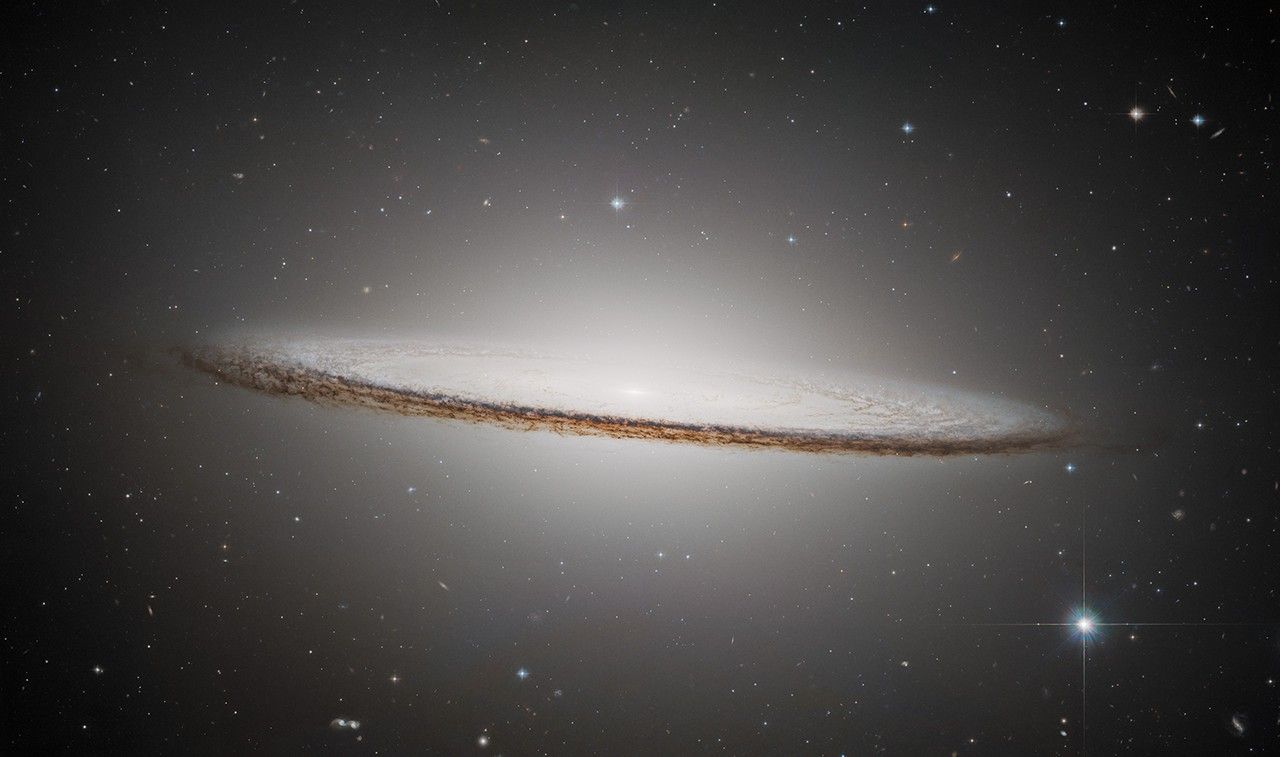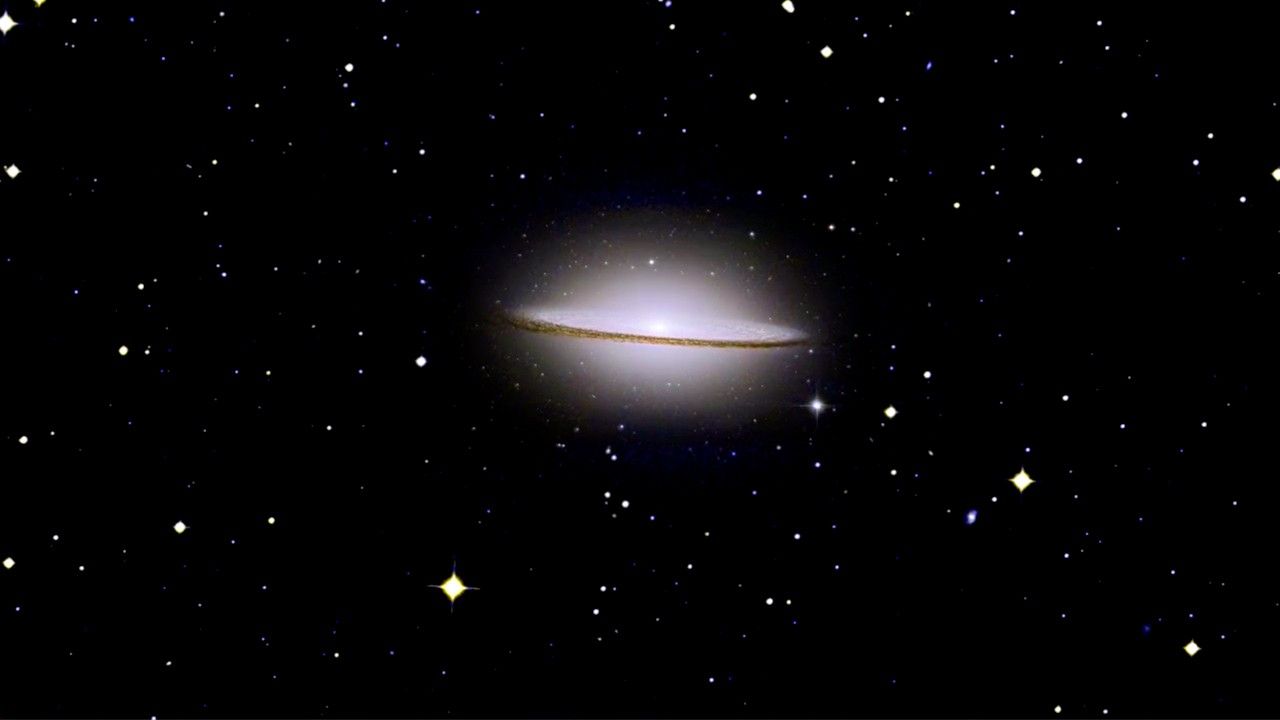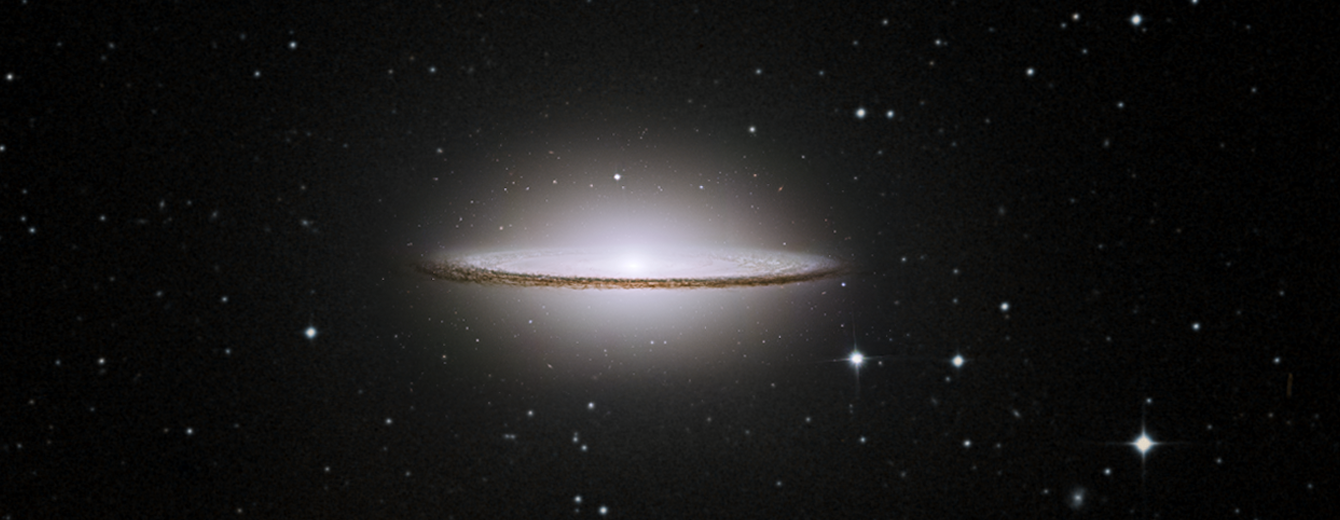Hubble Provides New View of Galactic Favorite
- The European Space Agency (ESA) has released a new image series of the Sombrero Galaxy, also known as Messier 104, as part of Hubble’s 35th anniversary celebrations.
- The new image reveals finer detail in the galaxy’s disk and more background stars and galaxies than previous images, showcasing its unique features such as a softly luminous bulge and sharply outlined disk.
- Researchers used Hubble to investigate the Sombrero Galaxy, measuring the metals in stars in the galaxy’s expansive halo, which suggests that it may have merged with another massive galaxy several billion years ago.
- The Sombrero Galaxy is located around 30 million light-years away in the constellation Virgo and is easily visible with a modest amateur telescope, but its viewing angle makes it difficult to discern its structure as either a spiral or elliptical galaxy.
- The Hubble Space Telescope has been operating for over three decades and continues to make groundbreaking discoveries that shape our fundamental understanding of the universe, including the Sombrero Galaxy’s unique features and history.
Hubble Provides New View of Galactic Favorite

ESA/Hubble & NASA, K. Noll
As part of ESA/Hubble’s 35th anniversary celebrations, the European Space Agency (ESA) is sharing a new image series revisiting stunning, previously released Hubble targets with the addition of the latest Hubble data and new processing techniques.
ESA/Hubble published a new image of NGC 346 as the first installment in the series. Now, they are revisiting a fan-favorite galaxy with new image processing techniques. The new image reveals finer detail in the galaxy’s disk, as well as more background stars and galaxies.
Over the past two decades, Hubble has released several images of the Sombrero Galaxy, including this well-known Hubble image from October 2003. In November 2024, the NASA/ESA/CSA James Webb Space Telescope also provided an entirely new perspective on this striking galaxy.
Located around 30 million light-years away in the constellation Virgo, the Sombrero Galaxy is instantly recognizable. Viewed nearly edge on, the galaxy’s softly luminous bulge and sharply outlined disk resemble the rounded crown and broad brim of the Mexican hat from which the galaxy gets its name.
Though packed with stars, the Sombrero Galaxy is surprisingly not a hotbed of star formation. Less than one solar mass of gas is converted into stars within the knotted, dusty disk of the galaxy each year. Even the galaxy’s central supermassive black hole, which at nine billion solar masses is more than 2,000 times more massive than the Milky Way’s central black hole, is fairly calm.
The galaxy is too faint to spot with the unaided eye, but it is readily viewable with a modest amateur telescope. Seen from Earth, the galaxy spans a distance equivalent to roughly one-third the diameter of the full Moon. The galaxy’s size on the sky is too large to fit within Hubble’s narrow field of view, so this image is actually a mosaic of several images stitched together.
One of the things that makes this galaxy especially notable is its viewing angle, which is inclined just six degrees off of the galaxy’s equator. From this vantage point, intricate clumps and strands of dust stand out against the brilliant white galactic nucleus and bulge, creating an effect not unlike Saturn and its rings — but on an epic galactic scale.
At the same time, this extreme angle makes it difficult to discern the structure of the Sombrero Galaxy. It’s not clear whether it’s a spiral galaxy, like our own Milky Way, or an elliptical galaxy. Curiously, the galaxy’s disk seems like a fairly typical disk for a spiral galaxy, and its spheroidal bulge and halo seem fairly typical for an elliptical galaxy — but the combination of the two components resembles neither a spiral nor an elliptical galaxy.
Researchers used Hubble to investigate the Sombrero Galaxy, measuring the metals (what astronomers call elements heavier than helium) in stars in the galaxy’s expansive halo. This type of measurement can help astronomers better understand a galaxy’s history, potentially revealing whether it merged with other galaxies in the past. In the case of the Sombrero Galaxy, extremely metal-rich stars in the halo point to a possible merger with a massive galaxy several billion years ago. An ancient galactic clash, hinted at by Hubble’s sensitive measurements, could explain the Sombrero Galaxy’s distinctive appearance.
The Hubble Space Telescope has been operating for over three decades and continues to make ground-breaking discoveries that shape our fundamental understanding of the universe. Hubble is a project of international cooperation between NASA and ESA (European Space Agency). NASA’s Goddard Space Flight Center in Greenbelt, Maryland, manages the telescope and mission operations. Lockheed Martin Space, based in Denver, also supports mission operations at Goddard. The Space Telescope Science Institute in Baltimore, which is operated by the Association of Universities for Research in Astronomy, conducts Hubble science operations for NASA.
Explore Hubble Sombrero Galaxy Images and Science

Heritage Project Celebrates Five Years of Harvesting the Best Images from Hubble Space Telescope
The Hubble Heritage Project released more than 65 images of dazzling celestial objects, including planets, dying stars, regions of star formation, clusters of stars, individual galaxies, and even clusters of galaxies.
Share
Details
Claire Andreoli
NASA’s Goddard Space Flight Center
Greenbelt, Maryland
claire.andreoli@nasa.gov
Bethany Downer
ESA/Hubble
bethany.downer@esahubble.org
Garching, Germany






